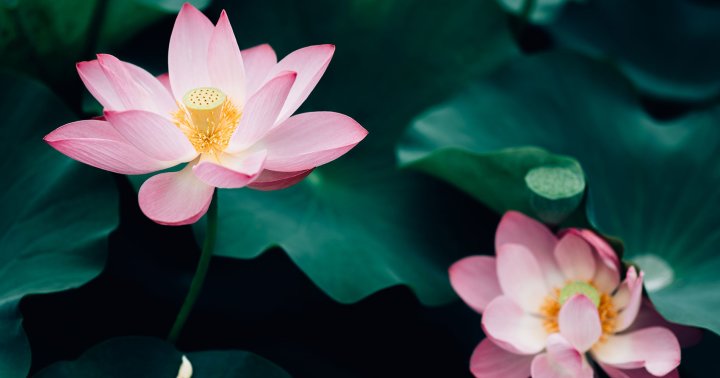Spring Lesson Plans for Preschoolers: Bringing Yoga and Nature Together
Spring is a magical time for preschoolers. The world comes alive with vibrant colors, new growth, and the promise of warmer days ahead. It’s a season that naturally inspires curiosity and exploration, making it the perfect backdrop for engaging...

Spring is a magical time for preschoolers. The world comes alive with vibrant colors, new growth, and the promise of warmer days ahead. It’s a season that naturally inspires curiosity and exploration, making it the perfect backdrop for engaging and educational activities. One fantastic way to harness the energy and beauty of spring in your classroom or at home is through yoga. By integratingspring lesson plans for preschoolers with yoga, you can create a dynamic and holistic learning experience that nurtures both the mind and body.
Why Yoga for Preschoolers?
Yoga is a wonderful practice for young children. It promotes physical strength, flexibility, and coordination while also fostering emotional well-being and mindfulness. For preschoolers, yoga can be a playful and joyful activity that helps them develop body awareness, self-regulation skills, and a sense of calm. When combined with the theme of spring, yoga becomes an even more engaging and meaningful experience.
Introducing Spring-Themed Yoga
Spring-themed yoga can include a variety of poses, movements, and activities that reflect the essence of the season. Think about the different elements of spring – blooming flowers, chirping birds, buzzing bees, and gentle rain showers. Each of these can be represented through specific yoga poses and sequences that are easy for preschoolers to follow and enjoy.
Spring Lesson Plans for Preschoolers: A Step-by-Step Guide
To help you get started with incorporating yoga into your spring lesson plans for preschoolers, we’ve put together a step-by-step guide using the Flow and Grow Kids Yoga Spring Sequence Yoga Cards and Lesson Plans. These resources are designed to make it easy for educators and parents to teach yoga to young children in a fun and effective way.

1. Setting the Scene
Begin by creating a calm and inviting space for your yoga session. You can decorate the area with spring-themed items such as flowers, pictures of animals, and soft pastel colors. Play gentle nature sounds in the background to enhance the atmosphere. Explain to the children that they will be going on a spring adventure through yoga, exploring different aspects of the season with their bodies and minds.
2. Warm-Up: Breathing Exercises
Start with simple breathing exercises to help the children focus and relax. Teach them how to take deep breaths in and out, pretending to smell the flowers as they inhale and blow away dandelion seeds as they exhale. This not only calms their minds but also sets the tone for the yoga practice.
3. Spring Yoga Poses
Use the Spring SequenceYoga Cards to guide the children through various spring-themed poses. Here are a few examples:
Flower Pose (Lotus Pose): Have the children sit cross-legged and imagine they are beautiful flowers blooming in the sunshine. Encourage them to stretch their arms up and open their hands like petals. Butterfly Pose: Instruct the children to sit with the soles of their feet touching and gently flap their legs like butterfly wings. This pose is great for hip flexibility and relaxation. Tree Pose: Ask the children to stand on one leg and place the sole of their other foot on their inner thigh, pretending to be tall, strong trees swaying in the breeze. This pose helps with balance and concentration. Caterpillar to Butterfly (Cobra Pose to Butterfly Pose): Have the children lie on their stomachs and lift their chests off the ground like a caterpillar. Then, they can sit up and transition into Butterfly Pose, symbolizing the transformation from caterpillar to butterfly.4. Spring Movement Activities
Incorporate movement activities that mimic the actions of springtime animals and weather patterns. For example:
Bird Wings: Have the children stand up and flap their arms like birds flying through the sky. They can even make chirping sounds for added fun. Bee Buzzing: Encourage the children to move around the room like buzzing bees, exploring different areas and pretending to collect nectar from flowers. Rain Dance: Play soft, rhythmic music and guide the children through a gentle rain dance, moving their bodies in flowing motions to represent falling raindrops.5. Mindfulness and Relaxation
End the session with a mindfulness activity and relaxation. Guide the children through a simple visualization, asking them to imagine lying in a meadow filled with flowers, feeling the warmth of the sun on their skin and the gentle breeze. Encourage them to close their eyes and take a few moments to enjoy this peaceful scene.
6. Reflection and Discussion
After the relaxation, gather the children in a circle and invite them to share their experiences. Ask questions like:
What was your favorite part of the yoga adventure? How did it feel to pretend to be different springtime elements? Can you think of other spring things we could include in our next yoga session?This reflection time allows the children to express themselves and reinforces the connection between the yoga practice and the theme of spring.
Benefits of Spring Lesson Plans for Preschoolers with Yoga
Integrating yoga into your springyoga lesson plans for preschoolers offers numerous benefits:
Physical Development: Yoga helps children develop strength, flexibility, and coordination, supporting their overall physical growth.
Emotional Well-Being: Through breathing exercises and mindfulness, children learn to manage their emotions and find calm in a busy world.
Cognitive Skills: Following instructions, remembering sequences, and participating in discussions enhance cognitive development and critical thinking.
Creativity and Imagination: Spring-themed yoga encourages imaginative play and creativity, allowing children to explore new ideas and concepts.
Social Skills: Group activities and discussions foster social interaction and cooperation, helping children build positive relationships with their peers.
Conclusion
Spring is a season of renewal and growth, making it the perfect time to introduce preschoolers to the joys of yoga. By incorporating spring lesson plans for preschoolers that include yoga, you can create a holistic and enriching experience that nurtures their physical, emotional, and cognitive development. TheFlow and Grow Kids Yoga Spring Sequence Yoga Cards and Lesson Plans provide a valuable resource to guide you in this journey, offering structured and engaging activities that bring the magic of spring to life. So, roll out the yoga mats, breathe in the fresh spring air, and embark on a delightful yoga adventure with your preschoolers!

 Tfoso
Tfoso 































